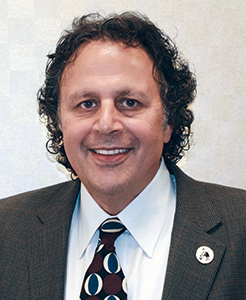As a child, were you fascinated by or fearful of pests? I never had much interest in insect or vertebrate pests.
When and why did you first become interested this business? I went to work for the Pest Control Operators of California (PCOC) in 1969 part-time while I was a freshman in college.
For which structural pest do you have the most respect, and why? The Argentine ant (Linepithema humile) because it’s the most prolific pest I’ve come across and it’s the No. 1 pest for pest management professionals (PMPs) in California.
How do you define integrated pest management (IPM)? I chaired the committee for the California Structural Pest Control Board that developed a definition of IPM, which was subsequently adopted by the Board as Section 1984 of the Rules and Regulations. It’s as follows:
(a) Structural IPM means a systematic decision-making approach to managing pests, which focuses on long-term prevention or suppression with minimal impact on human health, property, the environment, and nontarget organisms. Structural IPM incorporates all reasonable measures to prevent pest problems by properly identifying pests; monitoring population dynamics; and using behavioral, physical, biological or chemical pest population control measures to reduce pests to acceptable levels. If a pesticide application or other intervention is determined to be necessary, the selection and application of the intervention shall be performed in a manner that minimizes risk to people, property, the environment and nontarget organisms, while providing effective pest management.
(b) For the purpose of this section, intervention means an action, device, product or practice that’s intended for the prevention, control, management, elimination or abatement of a pest.
Which pest management technologies will significantly expand during the next decade? Technologies able to clearly identify and delineate all locations of drywood termite infestations within a structure, because that will allow local treatments to be as effective as structural fumigation.
What are the biggest obstacles facing the industry? The same as they’ve been for many years — fending off the efforts of antipesticide advocates who would simply ban all pesticide use without the benefit of science.
What are the industry’s biggest opportunities? They’ll come through the accomplishments of the public policy work being done at the state and national levels and the ability of the Professional Pest Management Alliance (PPMA) to position the industry as the true protector of health, safety and quality of life for residential and business consumers.
With what pest management projects are you involved? I’m the West market vice president for Rentokil North America responsible for our pest and plant businesses from Calgary and Vancouver south to the Mexican border; but I’m stepping down from that position at the end of 2014 and will become a part-time consultant for Rentokil North America with varied assignments.
At a Glance
Mike Katz
Title: West Market Vice President
Organization: Rentokil North America (Western Exterminator Co.)
Years in pest management: 45
Mentors: Roy Ashton, Larry Musgrove, Bob Russell
Industry achievements: FMC Government Affairs Professional of the Year; eight-time chairman of the National Pest Management Association (NPMA) Government Affairs Committee; member of the NPMA Government Affairs Committee continuously since 1985; president of the Pest Control Operators of California (PCOC); chairman of PCOC Legislative Committee for 12 consecutive years; PCOC’s 1984 Professional of the Year; president of Western Exterminator Co.
Mix served as editor and publisher of PMP for more than 20 years and is a member of the PMP Hall of Fame (Class of 2005). Reach him at jnmix@aol.com.

Leave A Comment